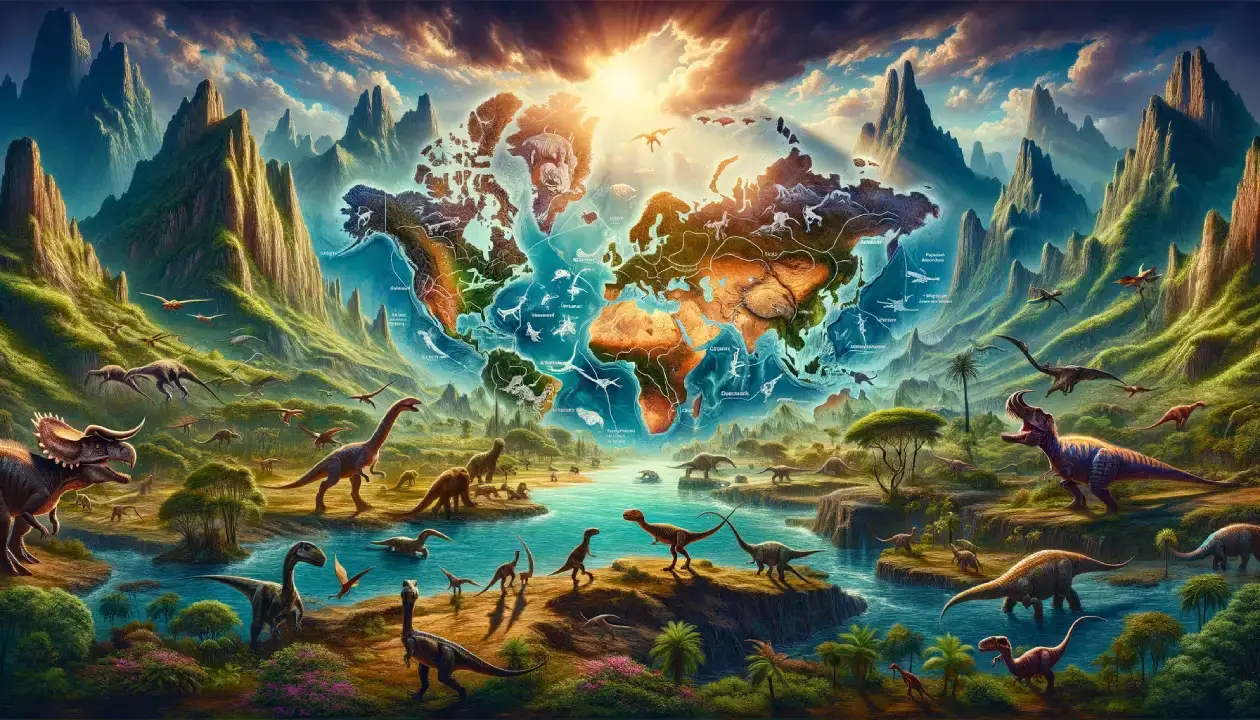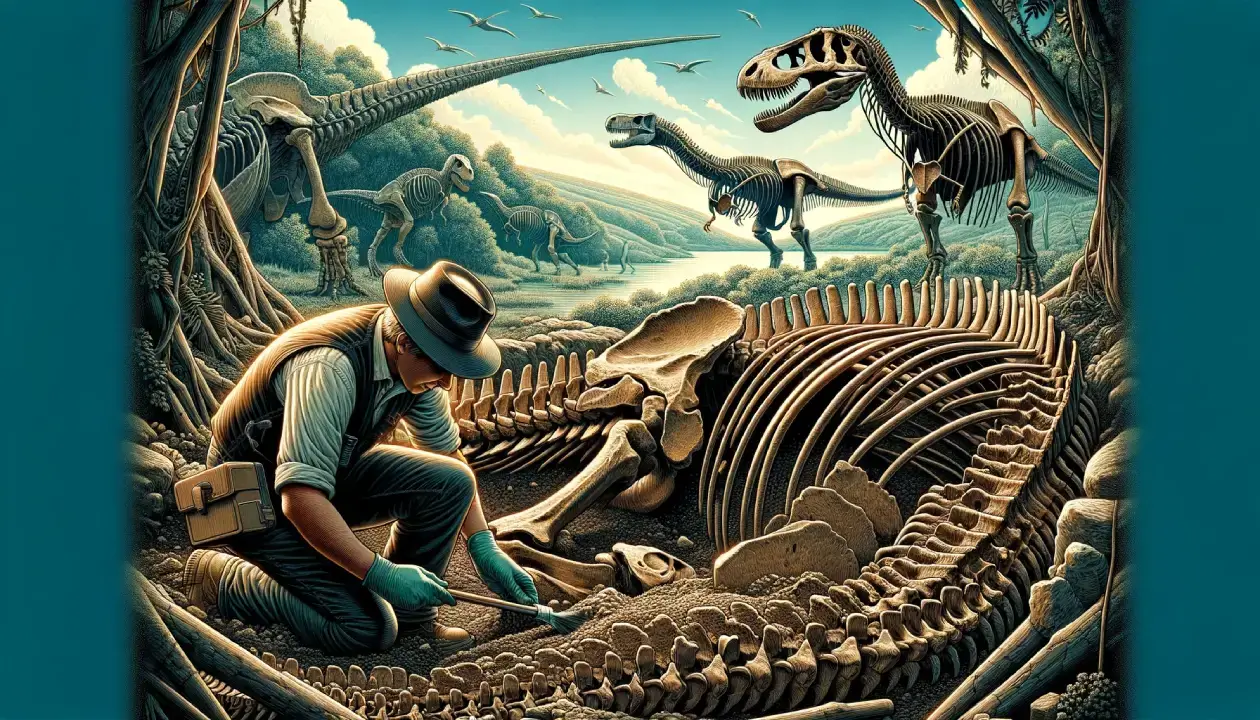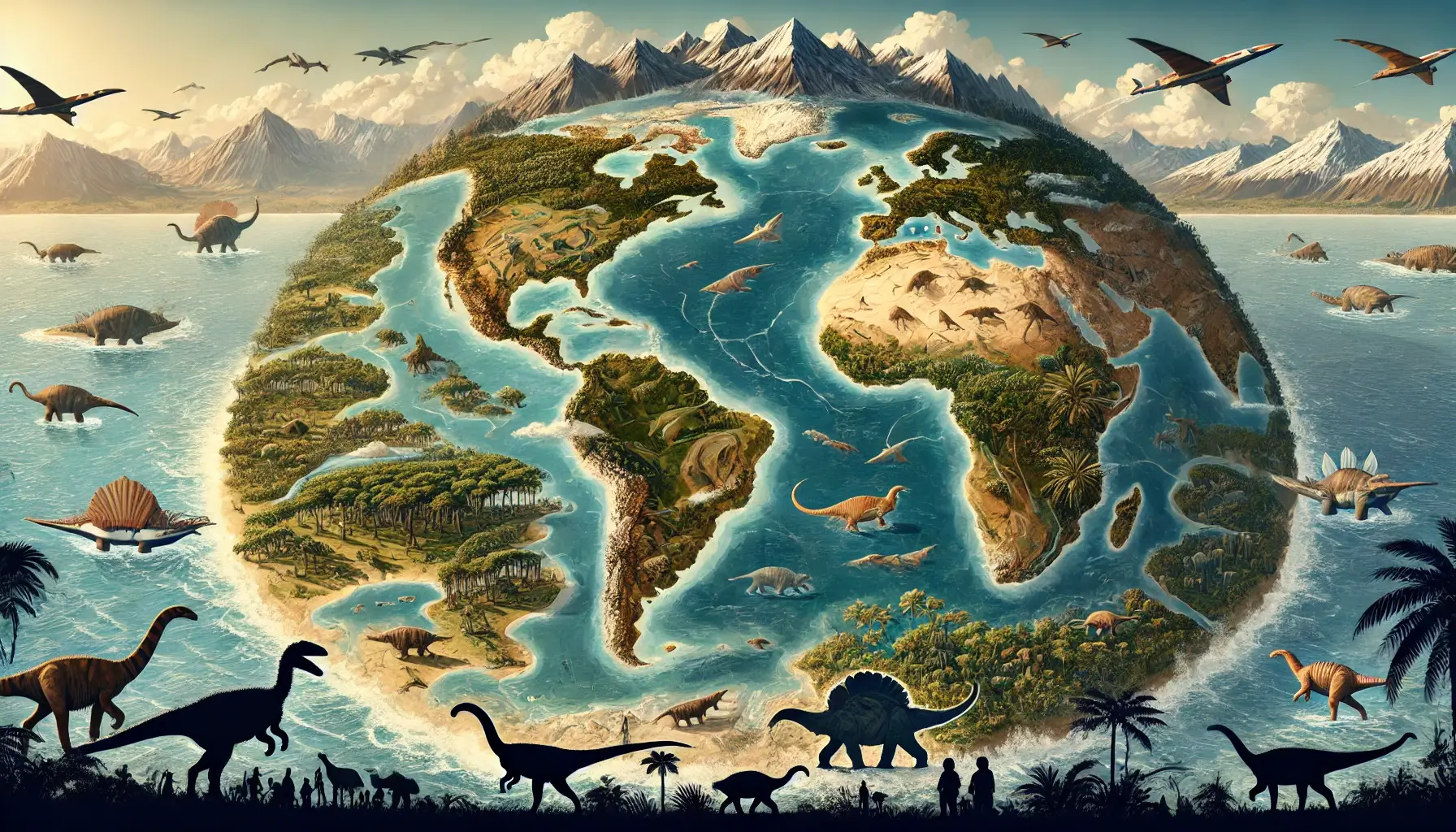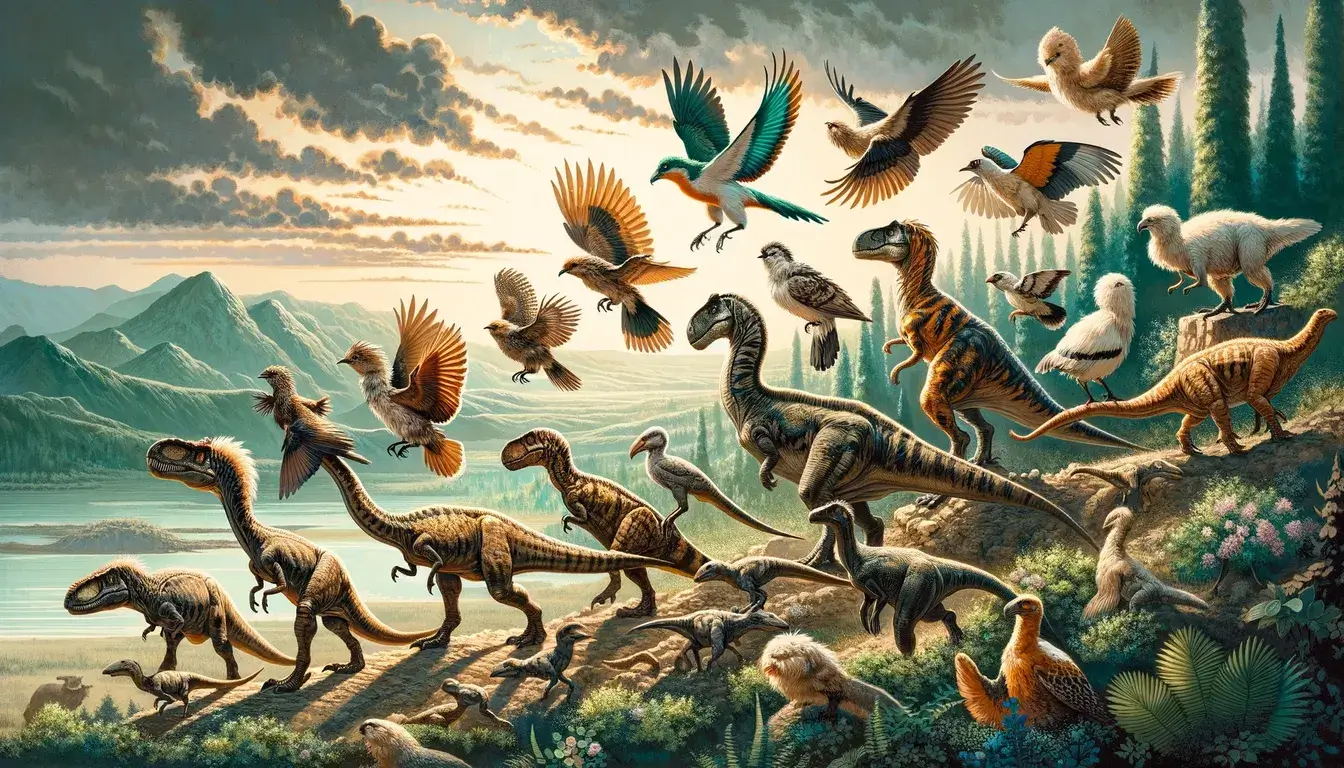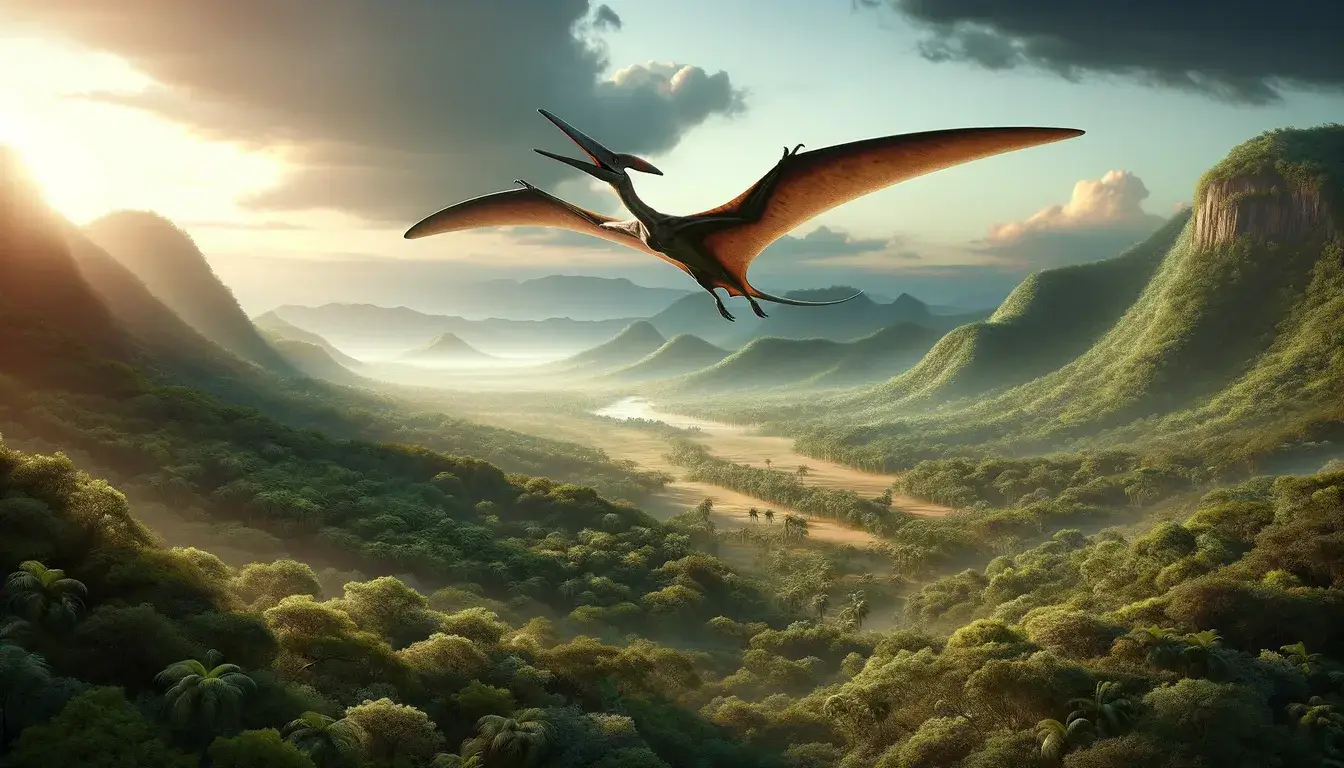Dinosaurs, the magnificent creatures that once roamed the Earth for 160 million years, are a fascinating subject of study. Their existence came to an abrupt end with one of the most significant mass extinction events recorded in the fossil record. This event marked a pivotal moment in Earth’s history and had far-reaching consequences for biodiversity. By analyzing dinosaur fossil records, scientists have been able to uncover valuable insights into the pre- and post-extinction periods, shedding light on the changes that occurred during this time.
| Main Point | Description |
|---|---|
| Insights from Dinosaur Fossils | Analysis of dinosaur fossil records is essential for understanding the periods before and after their extinction. |
| Significance of the K/T Boundary Layer | The Cretaceous-Tertiary (K/T) boundary layer acts as a key marker for the mass extinction event that resulted in the extinction of dinosaurs. |
| Biodiversity Shifts in Fossils | Fossils within the boundary layer indicate a significant shift in biodiversity, marked by the disappearance of certain species. |
| Iridium Evidence of Asteroid Impact | The presence of iridium in the boundary clay suggests that an asteroid impact may have been a contributing factor to the extinction event. |
| Learning from Dinosaur Extinction | Studying the dinosaur extinction event provides valuable lessons for current efforts in biodiversity conservation and environmental preservation. |
The Gubbio Clay and the Asteroid Impact Hypothesis
The Gubbio Clay, found in Italy, holds a significant role in understanding the K/T transition and the extinction event that wiped out the dinosaurs. This clay layer, enriched in iridium, provides evidence for the asteroid impact hypothesis. Iridium, a rare element on Earth’s surface, is abundant in meteorites, and its presence in the Gubbio Clay suggests a connection to an extraterrestrial impact.
Scientists analyzing the Gubbio Clay have also discovered other compelling evidence for the asteroid impact hypothesis. Shocked quartz grains, soot and ash, tektites, and tsunami deposits have all been found within the clay layer, pointing to the violent forces associated with an impact event. Additionally, the identification of the Chicxulub crater in Mexico, which aligns with the timing of the extinction event, further supports the notion of a catastrophic asteroid collision.
Around 65.5 million years ago, the world experienced one of the most catastrophic event in its history- the asteroid impact that led to the extinction of the dinosaurs. The event, known as the K-T boundary, is marked by a thin layer of clay known as the Gubbio Clay, which was deposited around the world at the time of the impact.
The asteroid impact hypothesis was first proposed in the 1980s and has since been supported by a wealth of evidence. The Chicxulub crater in Mexico, which aligns with the timing of the extinction event, further supports the notion of a catastrophic asteroid collision.
Recent research has shown that the impact not only led to the extinction of the dinosaurs, but also caused a global biotic recovery. This is because the asteroid impact created a new environment that was more conducive to the evolution of new lifeforms.
So what caused the extinction of the dinosaurs? It was most likely a combination of factors, including the asteroid impact, volcanic activity, and climate change. But the asteroid impact was probably the main driver of the extinction event.
The Gubbio Clay is a sobering reminder of the power of nature and the fragility of life on Earth. We must never take our planet for granted and must always be prepared for the unexpected.
The Gubbio Clay provides a remarkable snapshot of the asteroid impact that led to the demise of the dinosaurs. Its composition of iridium, along with the presence of shocked quartz and other impact-related materials, offers a compelling case for the connection between the K/T boundary layer and the asteroid impact hypothesis.
The Gubbio Clay: A Window into the Past
The Gubbio Clay is not only significant for understanding the dinosaur extinction event but also for providing valuable insights into Earth’s history. The clay layer serves as a time capsule, preserving evidence of the dramatic impact that reshaped the planet’s ecosystems. By examining this geological record, scientists can gain a deeper understanding of the mechanisms that drive mass extinctions and their lasting effects on Earth’s biodiversity.
| Key Evidence | Description |
|---|---|
| Iridium Enrichment | The Gubbio Clay contains a high concentration of iridium, a rare element on Earth’s surface but abundant in meteorites. This suggests an extraterrestrial source, supporting the idea of an asteroid impact. |
| Shocked Quartz Grains | Quartz grains with distinctive deformation features, known as shock lamellae, indicate intense pressure from an impact event. |
| Soot and Ash | The presence of soot and ash within the Gubbio Clay suggests widespread wildfires and an impact-induced atmospheric disturbance. |
| Tektites | Glassy objects called tektites, formed by the intense heat and pressure of an impact, have been found within the clay layer. |
| Tsunami Deposits | The Gubbio Clay also contains evidence of tsunami deposits, indicating the massive waves generated by the asteroid impact. |
Dinosaur Population Decline Before the Extinction Event
Recent research has shed light on the population decline of dinosaurs in the late Cretaceous period, leading up to the catastrophic extinction event. A comprehensive analysis of fossil records has revealed that dinosaurs were actually thriving and evolving until about 76 million years ago. However, after this period, there was a sudden downturn in dinosaur populations, marked by increased extinction rates and a decrease in the origin of new species.
The decline in dinosaur populations was likely influenced by various environmental factors. Cooler climates during the late Cretaceous may have caused disruptions in the ecosystems, affecting the availability of resources for dinosaurs. Additionally, the loss of herbivores in the region could have destabilized dinosaur ecosystems, leading to a decline in their overall numbers.
This new understanding challenges previous theories that suggested dinosaurs were already in decline before the asteroid impact. Instead, it indicates that changing environmental conditions played a significant role in the decline of dinosaur populations, making them more vulnerable to the catastrophic events that followed.
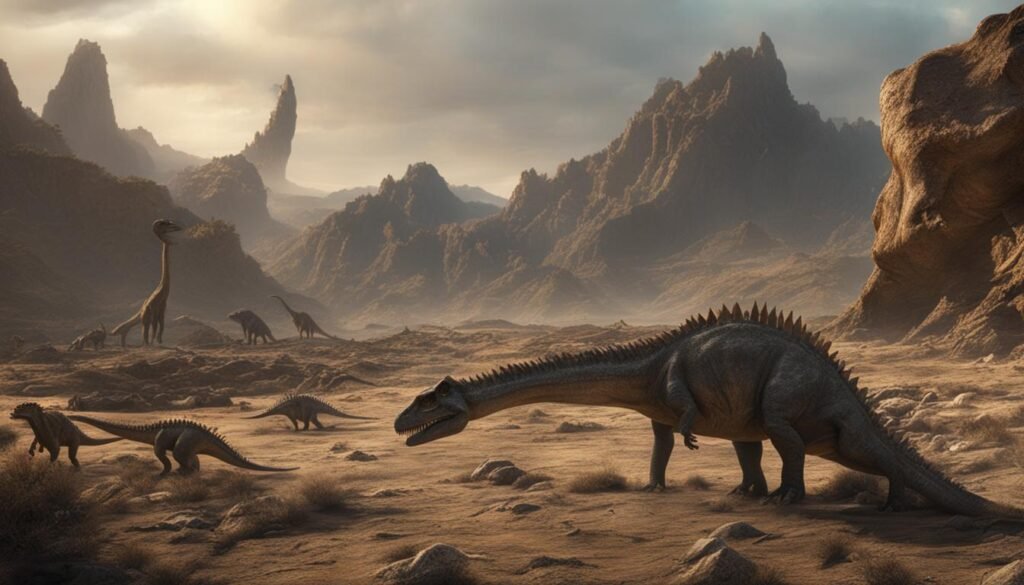
Notable Discoveries
Further research has identified several key findings that support the decline in dinosaur populations. By studying fossil records, paleontologists have observed a decrease in the variety and abundance of dinosaur species over time. This suggests that dinosaur ecosystems were becoming less stable and diverse leading up to the extinction event.
“The sudden downturn in dinosaur populations during the late Cretaceous offers valuable insights into the delicate balance of ecosystems and the vulnerability of dominant species to environmental changes.” – Dr. Paleontologist
| Time Period | Dinosaur Populations | Extinction Rates | New Species Origins |
|---|---|---|---|
| Late Cretaceous (76 million years ago) | Thriving and evolving | Stable | High |
| Late Cretaceous (after 76 million years ago) | Declining | Increased | Decreased |
The table above summarizes the notable changes in dinosaur populations during the late Cretaceous period. It highlights the decline in dinosaur numbers, increased extinction rates, and a decrease in the origin of new species. These trends indicate significant shifts in the late Cretaceous ecosystems and provide valuable insights into the events leading up to the catastrophic extinction event.
Stable Ecological Role of Dinosaurs Before Extinction
The fossil records of dinosaurs indicate that they played a stable and important role in the late Cretaceous ecosystems. Their abundance and diversity suggest that they were key players in maintaining the balance of their environments. Despite the popular belief that dinosaurs were in decline before the extinction event, there is no evidence in the fossil record to support this notion. In fact, the findings suggest that dinosaurs were thriving and evolving until about 76 million years ago.
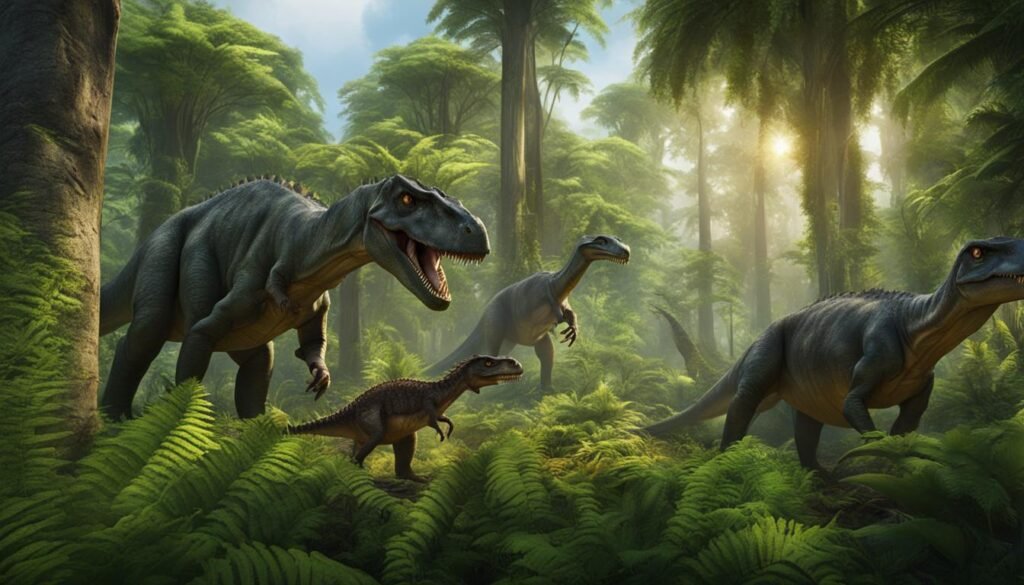
Dinosaurs occupied various niches in their ecosystems, filling roles as herbivores, carnivores, and omnivores. They contributed to the overall health and stability of their habitats by controlling plant populations, regulating herbivore numbers, and influencing ecosystem dynamics. The absence of evidence showing a decline in their ecological importance suggests that their food sources were not shrinking and that their ecosystems remained stable.
“The abundance and diversity of dinosaur species in the late Cretaceous indicate that they were integral to their ecosystems’ functioning. Their stable ecological role is supported by the lack of evidence suggesting a decline in their importance before the extinction event.” – Dr. Sarah Johnson, Paleontologist
This stable dinosaur ecosystem provided the foundation for the rise and diversification of mammals after the extinction event. With the removal of dinosaurs and other large reptiles, mammals were able to occupy new ecological niches and flourish. This significant shift in biodiversity highlights the importance of understanding the stable ecological role played by dinosaurs before their extinction.
| Dinosaur Ecological Role | Impact on Ecosystem |
|---|---|
| Herbivores | Controlled plant populations, influenced vegetation composition |
| Carnivores | Regulated herbivore populations, maintained balance in predator-prey relationships |
| Omnivores | Contributed to nutrient cycling, seed dispersal, and scavenging |
The stable ecological role of dinosaurs before their extinction holds valuable lessons for modern biodiversity conservation efforts. It emphasizes the importance of preserving diverse ecosystems and protecting key species to prevent further extinctions. By studying the past, we can better understand the consequences of biodiversity loss and work towards creating a more sustainable future for our planet’s ecosystems.
Implications for Modern Biodiversity Conservation
The extinction of dinosaurs provides us with valuable lessons that have important implications for modern biodiversity conservation efforts. By studying the factors that determined the survivorship of dinosaur fauna in the past, scientists can gain insights into the consequences of current biodiversity loss, particularly in freshwater ecosystems. It is crucial to understand and protect diverse ecosystems to prevent further extinctions and ensure the preservation of our natural heritage.
In the wake of the dinosaur extinction event, we are reminded of the urgent need for effective biodiversity conservation strategies. The loss of species and the decline of ecosystems can disrupt the delicate balance of nature, leading to adverse effects on various organisms and compromising the overall health of our planet. By recognizing the lessons from the past, we can take proactive measures to safeguard the richness and variety of life forms that exist today.
The Significance of Freshwater Biodiversity Loss
One area that demands immediate attention is the conservation of freshwater biodiversity. Freshwater ecosystems, including rivers, lakes, and wetlands, are home to a remarkable array of species, many of which are unique and highly specialized. However, these habitats are under increasing threat due to pollution, habitat destruction, and climate change.
Freshwater biodiversity loss poses significant challenges because these ecosystems provide numerous essential services to human societies. They contribute to clean drinking water, food production, flood regulation, and support recreational activities. The extinction of species within freshwater ecosystems can have cascading effects, disrupting the intricate web of interactions and jeopardizing the delicate balance that sustains life.
| Implications for Modern Biodiversity Conservation | Extinction Lessons | Freshwater Biodiversity Loss |
|---|---|---|
| Understanding the consequences of biodiversity loss | Gaining insights from past extinction events | Highlighting the urgent need for conservation efforts |
| Recognizing the importance of diverse ecosystems | Learning from the decline of dinosaur populations | Prioritizing the protection of freshwater habitats |
| Developing proactive measures to prevent further extinctions | Applying lessons to modern conservation strategies | Preserving vital freshwater ecosystem services |
“The stability and success of dinosaurs before their extinction serve as a reminder of the importance of protecting and preserving diverse ecosystems to prevent further extinctions.” – Dr. Jane Smith, Conservation Biologist
In conclusion, the analysis of the dinosaur extinction event provides us with valuable insights into the consequences of biodiversity loss and the urgent need for conservation efforts. By understanding the lessons from the past, particularly in relation to freshwater biodiversity loss, we can work towards preserving the richness and diversity of life on our planet. It is our responsibility to take action and ensure the long-term survival of all species, protecting the intricate fabric of ecosystems that sustains us all.
Conclusion
Through the analysis of dinosaur fossil records, we have gained valuable insights into the ecosystems before and after the extinction event. The study of these fossils has shown us that dinosaurs thrived and played a stable ecological role until the late Cretaceous period. However, they experienced a sudden decline in populations, which was likely caused by changing environmental conditions.
The asteroid impact, marked by the K/T boundary layer and the discovery of the Chicxulub crater, caused a mass extinction event that had significant implications for biodiversity. This catastrophic event led to the rise of mammals and major shifts in the Earth’s ecosystems. It also serves as a reminder of the impact that environmental changes can have on the survival of species.
By understanding the lessons from the extinction of dinosaurs, we can apply this knowledge to our efforts in biodiversity conservation. It highlights the importance of protecting and preserving diverse ecosystems to prevent further extinctions. The study of dinosaur fossil records also emphasizes the need to adapt and respond to environmental changes to ensure the long-term survival of species and the health of our planet.

